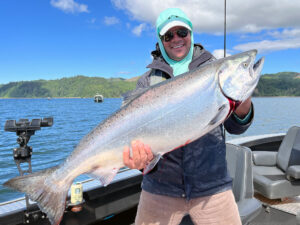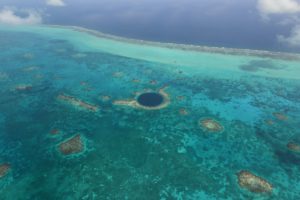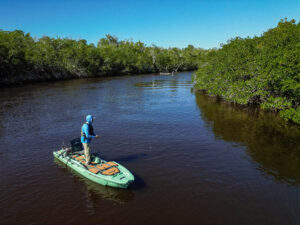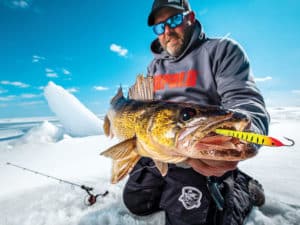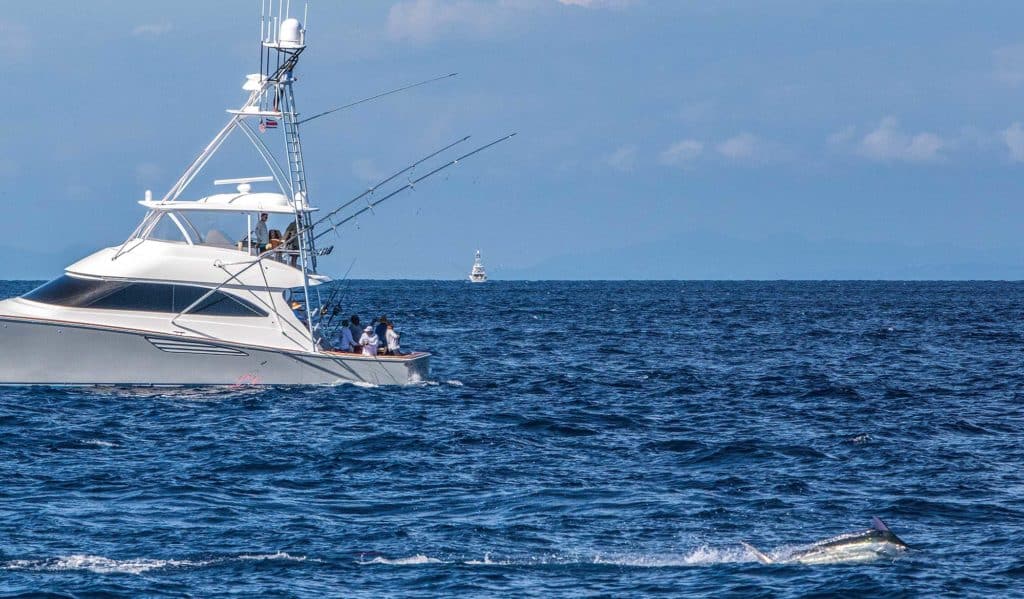
On the first day of the August 2014 MidAtlantic fishing tournament, the biggest white marlin I’d ever seen ate a natural squid bait at 8:04 a.m. in Washington Canyon, southeast of New Jersey. The half-hour fight that ensued took place within all IGFA-rule constraints, the gear fit into all the parameters, and with lines in at 8 a.m., the timing couldn’t have been more perfect. When we boated the fish, its tail span was its most amazing trait, stretching beyond my 2-foot-long arm. Its eyeballs were the size of the lenses in my sunglasses. It was a beast, a mutant, and a surefire tournament winner. We were not in the tournament.
Like the 900-pound blue marlin caught on Marlin Magic the day before the Hawaiian International Billfish Tournament this past October (the eventual winning fish weighed 486.6 pounds), the thousand opportunities for hope provided by the sport we call offshore fishing can pay off in only the right place, at the right time, and if you’re in the competition. With startling regularity, however, all of the pieces of the tournament-winning puzzle fall into place in ways that are impossible to script. Reality is truly stranger than fiction.
There will be cheers at the weigh-ins, but some are louder than others. There will be money won, but sometimes far more — or far less — than otherwise might have been. And there will be captains who were certain of winning right up until that last boat arrived with seconds left.
Tournament fishing is a roller-coaster ride. To share those up-and-down moments, we asked tournament directors at some of the nation’s top-dollar events to tell us about the most incredible victories and most crushing defeats they’ve ever seen. What we discovered was — no surprise — a lot of surprises.
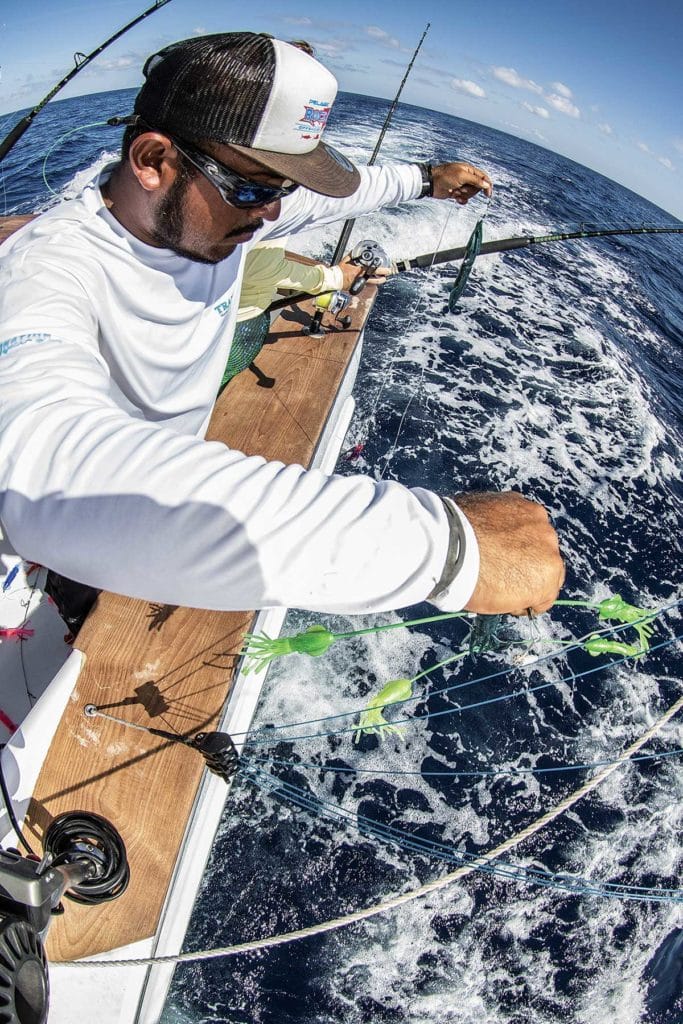
Photo Finish
Of all the crazy tournament stories we heard, one of the most uplifting comes via Tod Roy, president and manager of CI Management Group, which runs the Jimmy Johnson National Billfish Championship, fished each March out of Key Largo, Florida.
“This tournament is all about the rings, more so than the cash,” Roy says, explaining that the rings awarded to winners are practically on par with the Super Bowl rings earned by Johnson himself. “But there’s still an awful lot of money involved. So we really have to stick to the rules.
“One of the most important rules of the tournament is that all catches have to be captured on video. After the first day of the tournament, we might look at 300 to 400 videos to verify that each and every fish was caught properly.”
That verification is key to maintaining a level playing field, and provides evidence that’s tough to dispute. No one likes it when tournament disputes arise, so most anglers are more than happy to abide by this rule. But it does add another level of complexity to an already chaotic situation, and during the 2016 tournament, that resulted in some unexpected repercussions.
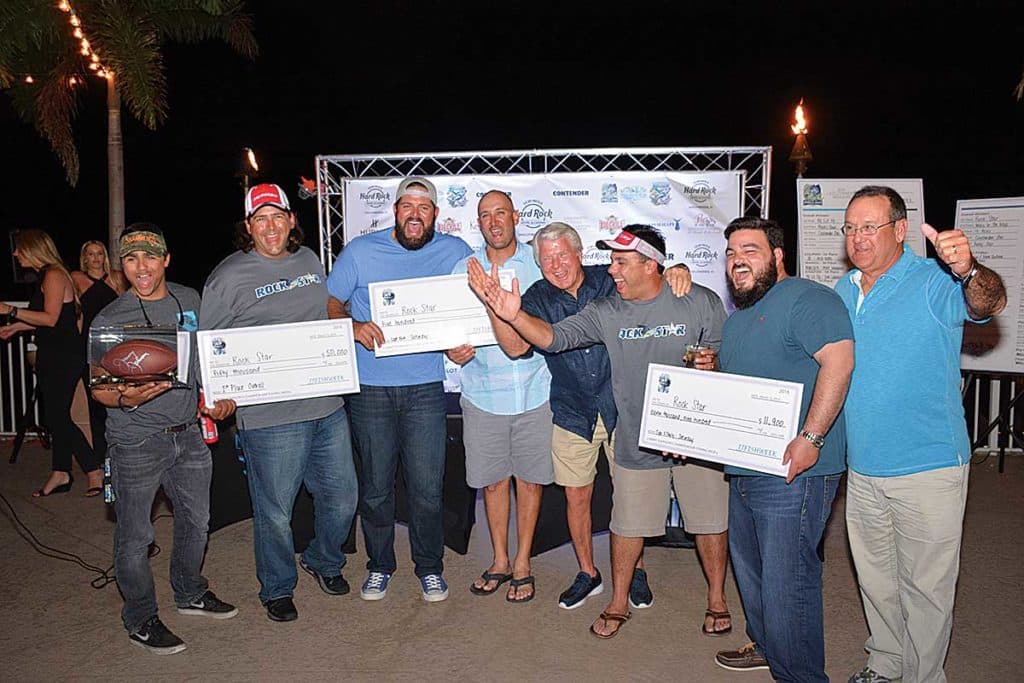
“Rockstar held the lead at the end of the first day of fishing, after catching all four fish during a quad hookup,” Roy explains. “Then that night, we sat down to review all the videos. When we plugged in Rockstar‘s video card, we knew right off the bat that something was very wrong. All we could see was a sliver of light at the top of the screen, and the rest of it was black. The audio was fine. We could hear everything, and we could even see a few high-fives in the top part of the screen when the fish were being caught.”
As it turned out, the camera strap had fallen over the lens and was blocking most of the picture. “We really wanted to accept those four fish. We watched over and over, to see if we could spot parts that would verify any of the catches,” Roy says. “But at 11:00 that night, we decided we had to make a phone call to the boat’s owner (Jorge Piedra of Miami) and tell him that those four fish were out. It was heartbreaking. No one was happy.”
But the next morning a new day began, and without argument, Rockstar was right back at it. As the day wore on, they caught some fish and managed to climb back up the ladder, but remained down by three fish with just a few minutes remaining in the tournament.
Then, they hooked a final sail. And then another. And another, and another. With literally one minute remaining on the clock, they called in with a fourth billfish on the line. They successfully caught all four fish, rocketing them right back into first place.
This time, the video evidence was irrefutable.
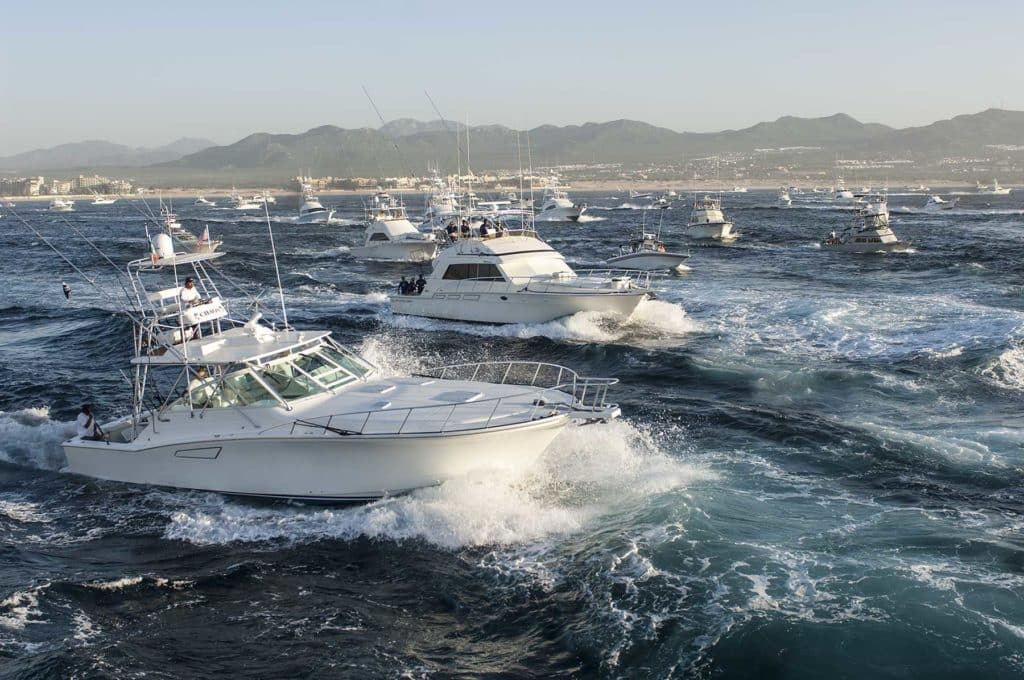
Blessing of the Breakdown
Some years in the multimillion-dollar White Marlin Open, the world’s biggest billfish tournament, held in August out of Ocean City, Maryland, boats have succumbed to mechanical issues. Truth be told, there isn’t an angler reading this right now who doesn’t already know Murphy’s Law of machines. But could a vessel breakdown during the WMO actually turn out to be a blessing? History would seem to argue that this could the case.
“We had one boat, years ago, that broke down on its way out,” says Jim Motsko, founder of the WMO. “They couldn’t run, but they still had power, so they decided to put their lines out and fish right there.”
Motsko noted that if a boat with mechanical problems has a fish to weigh, the tournament rules allow for the fish to be transferred to another boat to be brought to the scales for the weigh-in. “They ended up catching a white marlin,” he continues, “right at that spot where they broke down. Another boat brought it in for them, and they ended up winning the tournament.”
Then in 2013, team Kingfisher had mechanical issues with their boat just before the tournament got underway. Rather than try to rush a repair or roll the dice fishing from an iffy boat, they opted instead to hire OdinSpear, a charter vessel out of Ocean City’s Sunset Marina. Angler Tommy Jones, who has been fishing the WMO for more than 20 years (and took third place in 2010 with an 80.5-pound white), landed an 83-pound billfish worth more than $1.2 million from the deck of the team’s “replacement” boat.
Even more recently, another breakdown once again turned into a blessing. During the 2016 WMO, Hubris struck an unidentified object on its way to the fishing grounds on the first day of the tournament. With their steering completely gone, the team lost the day of fishing entirely.
Fortunately, they patched things together well enough to fish with “limited abilities” the next two days. And while they did, they managed to tie into a 236.5-pound bigeye tuna. On the way home, they lost all steering again, just 4 miles from the inlet. TowboatUS got them back to the dock, they loaded the fish into a pickup truck, drove it to the scales, and ended up pocketing $767,091 for their persistence.
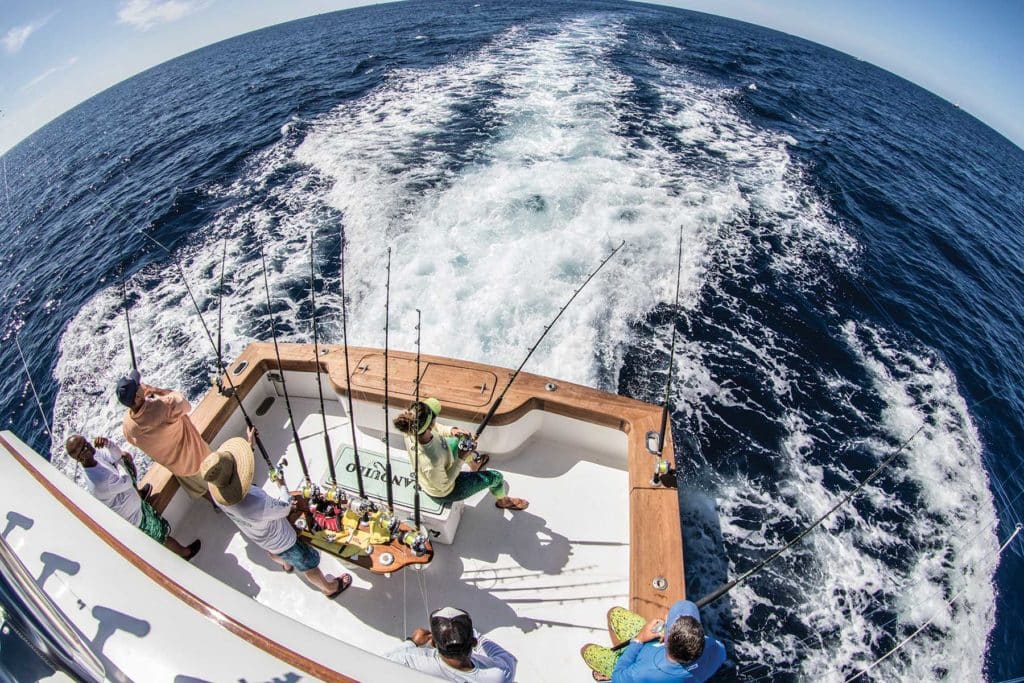
A Pirate’s Life for Me
While most tournaments have generated an interesting story or two, I heard so many while talking with the folks from the Pirate’s Cove Billfish Tournament, an August event fished out of Oregon Inlet, North Carolina, that I had trouble narrowing down the choices to the top three.
“One of the best-known events took place during the 2008 tournament, when Trey Irvine aboard Mimi caught a new state record 1,228.5‑pound blue marlin,” says tournament director Heather Maxwell. “I wasn’t the tournament director at that time, and I was in Manteo 2 miles away when she hit the scales, but I still heard the roar from the crowd. All I felt was pride. The envy came later. That one was special.”
Possibly even more surprising than a grander and a new state record, however, was Capt. John Bayliss and his team managing to take top-boat honors in 1988 aboard Tarheel. “The team won the event even though Capt. Brynner Parks and his crew aboard Teaser successfully landed and weighed the tournament’s first grander, at 1,080 pounds. [Tarheel] beat it with release points,” Maxwell explains. “The win prompted the tournament to change its scoring and allow additional points for fish over 600 pounds.”
But even that rule change wasn’t enough to keep Bayliss from focusing on a release strategy. “Fast forward 10 years, and Bayliss strikes again,” Maxwell says. “The crew of Southern Comfort had landed a 975.3-pound blue marlin and brought her to the scales. In the end, though, the Hatteras 70 with the Hall brothers in the ‘pit and Bayliss at the helm managed to edge their way to top-boat honors yet again with release points.”
The most intense moments at Pirate’s Cove, however, took place during the final minutes of the 1990 tournament. “Angler Judy Burnette horsed a 453-pound blue marlin to the deck of Sea Toy, and Capt. Bull Tolson headed for the scales,” Maxwell remembers. “The problem was that back in those days, Sea Toy was slow, just like all the other boats. And Capt. Bull knew that getting to the scales on time would be tight.
“Although current rules say the boats need only to be under the bridge before the cutoff, back then the rules said the fish had to be on the scale by the deadline. Somewhere, probably in someone’s attic, there is a VHS tape recording of Sea Toy running through the basin and into the marina with the throttles to the pins. The most amazing sight was all the people on boats in the marina waving them on. No one was worried about the speed or the wake — everyone just wanted to see that fish weighed. Judy and Bull won the tournament, with only minutes to spare.”
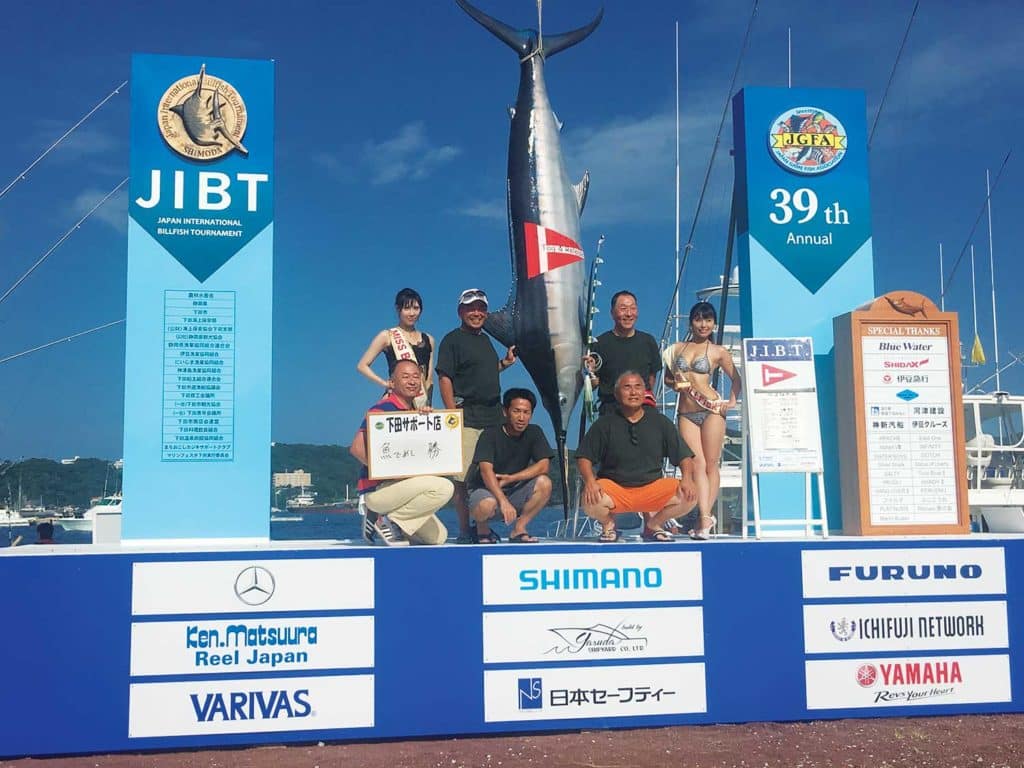
Life on the Fly
You might guess that someone like Robert “Fly” Navarro would have an interesting story or two to tell about the World Cup Blue Marlin Championship, since he fished it for decades before becoming managing director in 2015 — and you’d be right. But he says his most impactful tournament experience actually came years before he became involved with the Cup.
“We were fishing the MidAtlantic in Cape May in 1993,” he says, “long before I realized I’d be chasing marlin around for the rest of my life. I hung my first fish ever on the scales, a 387-pound blue marlin. It seemed big — it was big — and we were in first place right up until just five minutes remained. Then, Major Motion rolled in with a 660-pounder. And right behind it, Freebie came in with a fish over 700 pounds. I just hadn’t realized until right then how competitive and how thrilling it all could be.”
Read Next: A Fishing-Tournament Rookie Tells All
Navarro says that thrill continues to this day, and points to his recent experience at the Japanese International Billfish Tournament in Shimoda, Japan, as an example of how things never get boring in the tournament business.
“I couldn’t understand a thing anyone was saying,” Navarro notes, “but everyone was so happy, and they welcomed me with open arms. Twenty of the 87 teams had volunteered to do the cooking at the captains’ party, and it was like a competition all of itself. The food was amazing.
“Then, on the first day, they had a ceremony that reminded me of the blessing of the fleet in North Carolina. But instead of saying a blessing, they had a shrine at the tournament headquarters, and the board members all gave an offering. They gave me the branch of a tree, and allowed me to give it as an offering too. It was an amazing experience, and I hope I get to go back.”
His biggest tournament surprise, however, came not from a win but from a loss. “We were fishing the Grand Slam Billfish Tournament in Venezuela,” he says, “and in the first two days, we got two grand slams. We were in first place and coasting. All we had to do on day three was catch a few fish and we had it made. We went in one direction, to where we thought we’d find some blues. The other boats went in the other direction. Well, they went the right way and got into so many whites that we were bumped down to fifth!”

Last-Minute Changes
One of the most common themes I heard from everyone I spoke with concerned last-minute lead changes in the final moments of the tournament — changes that broke some hearts and made others race with exhilaration.
In last year’s Los Sueños Signature Triple Crown in Costa Rica, Xta Sea didn’t touch the leaderboard for more than two and a half days. Then at 2:01 p.m. on day three, the crew made their presence known, and during the next hour and 59 minutes, clawed their way into first place with a final tally of five marlin releases.
In the 63rd Stuart Light Tackle Sailfish Tournament out of Stuart, Florida, at 1:37 p.m., with less than two hours to fish, three boats were tied at 13 sails apiece. The radio fell silent until 2:54 p.m., when Jimbo Brogan, on Toast, hooked and landed number 14 to win.
And in the sixth annual Operation Sailfish tournament out of West Palm Beach, Florida, this past December, Weez in the Keys won by racking up three releases in the final hour of fishing, for a total of 14 fish, jumping past a pair of boats tied at 13 apiece.

